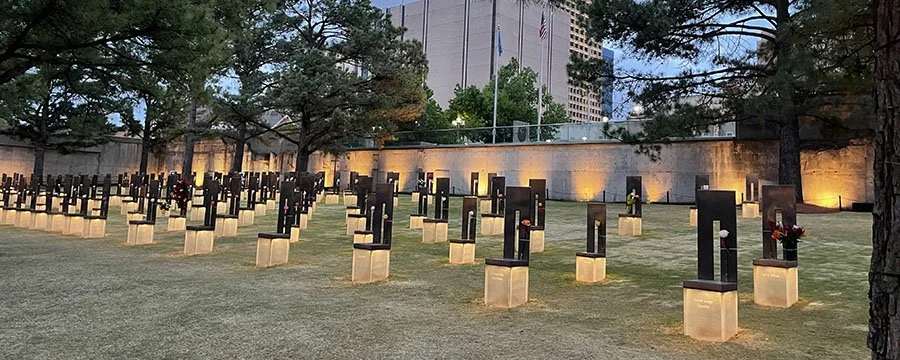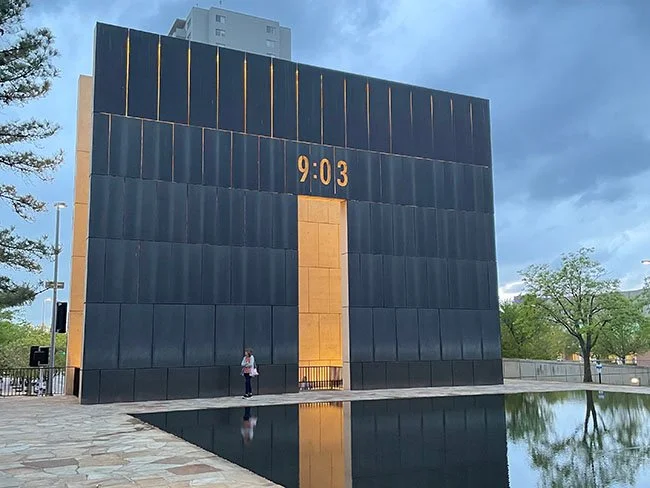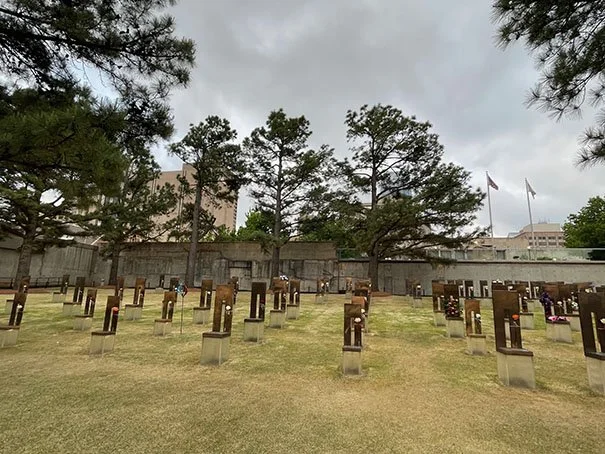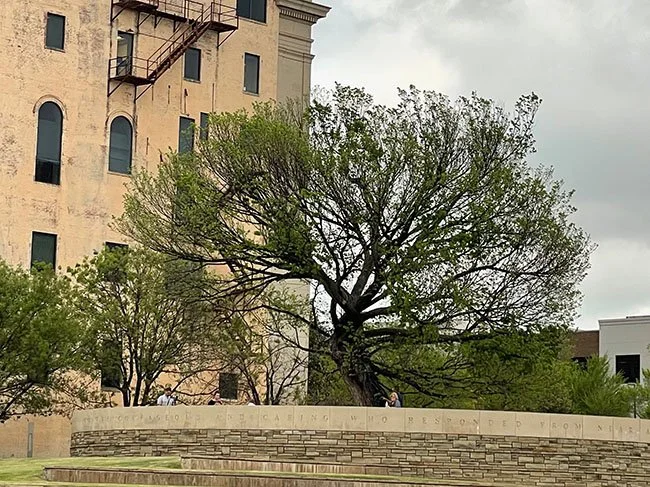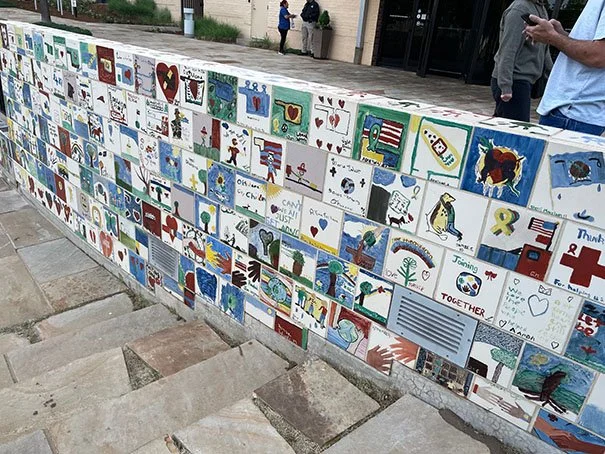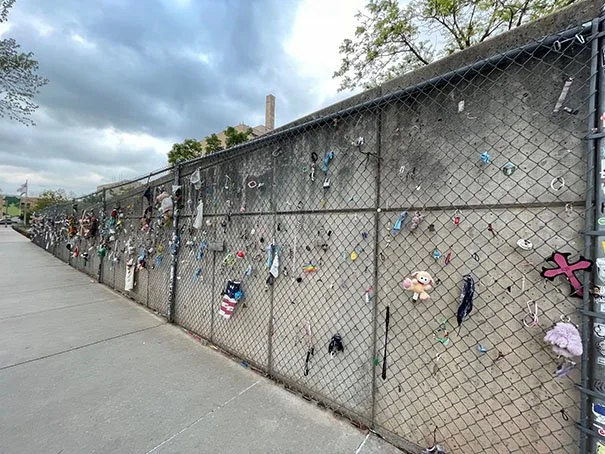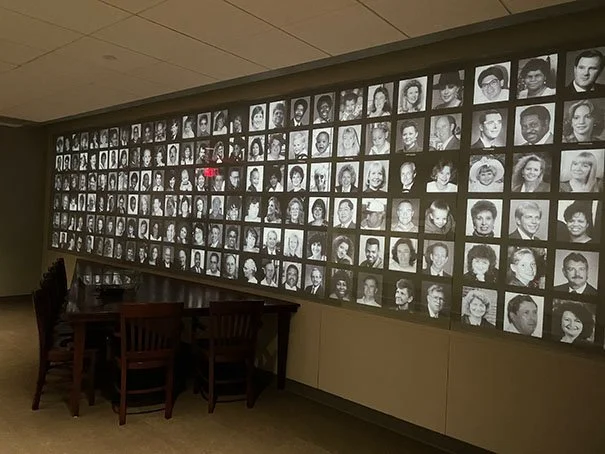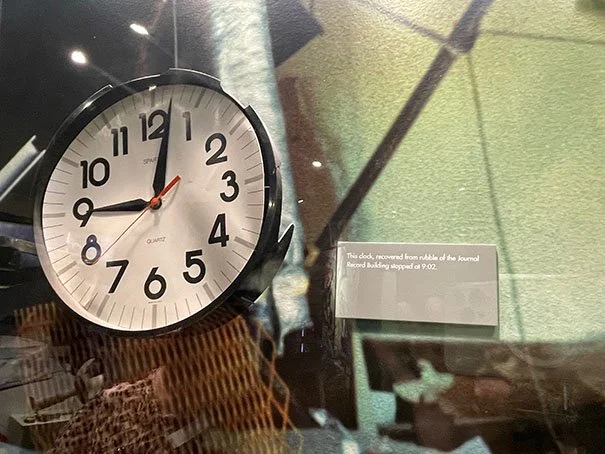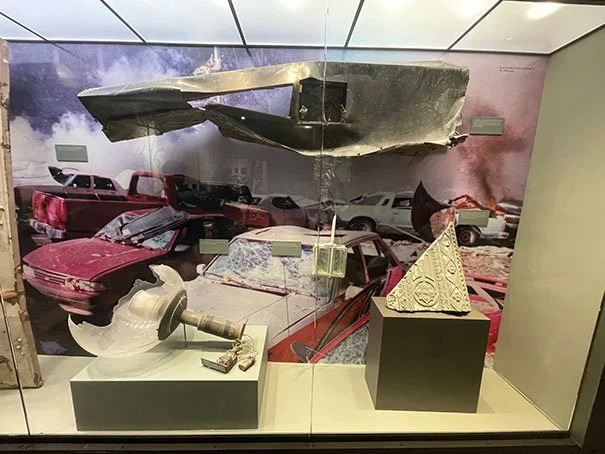Oklahoma City Memorial
The Fields of Chairs at night, Oklahoma City National Memorial
Creating Peaceful Reflection from a City’s Darkest Day
Plan Your Visit | Destinations | Museums
At 9:02 a.m. CDT on 19 April 1995, a rented truck loaded with fertilizer exploded in front of the Alfred P. Murray Federal Building in downtown Oklahoma City, OK. For those old enough to remember, it was one of the most shocking events of the 1990s.
Learn more about the Oklahoma City Bombing at the Federal Bureau of Investigation website prior to visiting.
My Visit
The Oklahoma City Bombing Memorial and Museum was my first stop on the Quickie Midwest Swing of 2023. I had a week between medical appointments and wanted to make good use of the time and spend it on the road. I had a medical appointment on 18 April 2023. Realizing that the 28th anniversary was the next day, I left straight from that appointment so I could be there the next morning.
Oklahoma City is a six-hour drive from Austin, so I made it in time to visit the memorial as the sun was setting. I highly recommend visiting at night when the Chairs and Gate of Time are lit up (the outdoor part of the memorial is open 24/7).
The next morning, 19 April 2023, I walked over again prior to the 9:02 a.m. memorial time. The memorial service was held in the United Methodist Church across the street; I, like some others, chose to sit at the memorial itself across the reflecting pool from the chairs, since I did not want to occupy a seat meant for survivors, rescuers, or victims’ family members. As 9:00 a.m. approached, people took their seats opposite the pool from the empty chairs and sat quietly and respectfully as 9:02 a.m. passed.
What’s amazing about this memorial is the profound sense of peace you feel despite the violence it commemorates. The 350-member Memorial Task Force, which included experts in mental health, law, arts, business and communications, gathered ideas from the families, survivors, and the public to craft an amazing memorial visitor experience. This work produced a memorial that transmutes the pain from that day to a powerful place of peace that not only honors those affected by the bombing, but provide everyone a place to reflect on how the lessons of that day apply to each of us:
Life can change or end in literal seconds.
We all have the power to turn pain into peace.
No matter how large the injustice or the evil that walks amongst us, there is still a lot of good in this world.
Lay of the Land
The memorial was built in the footprint of the destroyed Murrah Building, with the indoor museum in the building next door.
The Field of Empty Chairs: This memorial is famous for the Field of Empty Chairs, which sits in the footprint of the destroyed building and represents each of the 168 people who died that day. The chairs are arranged based on which floor the victims were known to be on at the time of the bombing.
Smaller chairs represent the 19 children who died (many of whom were in the day care in the building). One chair honors the little girl carried by a firefighter in the Pulitzer Prize–winning photograph from that day. She had her first birthday just the day before the bombing, and her chair was decorated when I arrived. Learn more about those who were killed and other stories from that day.
Gates of Time and Reflecting Pool: At each side of the Reflecting Pool are gates representing the minutes before and after 9:02 a.m., signifying how quickly life can end or change. The east gate is marked “9:01” and the west gate “9:03”, symbolizing healing. There is a seating area across the pool from the chairs, and the gates are left-to-right from that vantage point.
The Survivor Tree: This American elm tree survived the bombing despite heavy damage. From here, you can get a great overall view of the outside memorial. Each year, hundreds of seeds from this tree are planted and distributed; they are available for purchase online.
The Memorial Fence: This is part of a fence was initially installed to protect the building site but has since been moved outside of the 9:03 Gate. People leave remembrance tokens on the fence, though they are periodically removed, catalogued, and preserved in the archives.
Before you go, I recommend selecting a small token to attach to the fence. My contribution was a little dragonfly bracelet I bought at the Lady Bird Johnson Wildflower Center in my home city of Austin, TX. Be creative with your contribution! I saw a wreath, stuffed animals, keychains, and mementos from visitors’ hometowns.
The Survivors’ Wall: Made up from the original north and east walls (the only parts of the building that survived), this includes granite salvaged from the building that lists the names of more than 600 survivors from the building and surrounding area.
The Plaza: This overlooks the memorial and contains an original part of the Murrah Building. This is along the 4th Street side.
Museum
The museum is housed in the neighboring building, which still bears scars from the bombing. At the time, it housed the offices for The Journal Record, a daily business and legal newspaper in Oklahoma City that is in circulation today.
In front, the Children’s Area features thousands of hand-painted tiles from children around the world. Inside, in addition to exhibits and artifacts from the day, you can hear a live recording of a regulatory hearing interrupted by the blast.
Related Content
Read more about my visit to Oklahoma City and the Oklahoma State Capitol.

